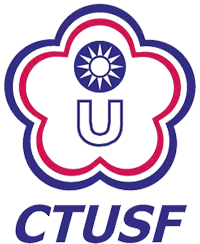Sports & Exercise Research Volume 10 Number 2
Author:Chun-Hong Lin ; Nean-Been Kan
Period/Date/Page:Vol. 10 No. 2 (2008 / 06 / 30) , P137 - 147
DOI:10.5297/ser.200806_10(2).0011
The Effects of Different-Intensity Six-Point Criss-Cross Intermittent Tennis Running Exercise on the Metabolic Indicators of College Students
Abstract:This study explored the effects on human metabolic indicators, i.e., BUN, CK, and LDH, when subject undergoes different intensities of a six-point criss-cross intermittent tennis running exercise. This study explored also proper duration time for recovery in metabolism after a six-point criss-cross tennis running exercise. This study tested 24 healthy college student subjects who were members of a college tennis club. The subjects were randomly divided to High Intensity Group, Low Intensity Group, and the Control Group. All subjects had blood samples taken for testing at: before exercise, 1 hour after exercise, 3 hours after exercise, 6 hours after exercise and 24 hours after exercise. The blood samples were tested for the metabolic indicators, i.e., BUN, CK, and LDH. The data were analyzed using the two-way ANOVA method and tested for the changes at different periods of recovery in the three groups. If the results were statistically significant, then the Tukey's-HSD method was used to conduct the post-hoc comparison. As a result, the control Group's BUN, CK, and LDH levels showed no change before and after exercise. The High Intensity Group's BUN levels 1 hour and 3 hours after exercise were significantly higher than those of the Control Group; the CK and LDH levels 1 hour, 3 hours, and 6 hours after exercise were significantly higher than those of the Control Group. The Low Intensity Group's BUN levels 1 hour and 3 hours after exercise were significantly higher than those of the Control Group; the CK and LDH levels 1 hour, 3 hours, and 6 hours after exercise were significantly higher than those of the Control Group. The High Intensity Group's BUN level 1 hour after exercise was significantly higher than that of the Low Intensity Group; High Intensity Group's CK levels 1 hour and 3 hours after exercise were significantly higher than those of the Low Intensity Group; High Intensity Group's LDH 1 hour after exercise was significantly higher than that of the Low Intensity Group. The changes in BUN, CK, and LDH levels all returned to resting values in both the High Intensity Group and the Low Intensity Group after 24 hours. To conclude, the two different intensities of six-point criss-cross intermittent tennis running exercises will cause the levels of metabolic indicators to significantly increase, and the level of increase is affected by the level of exercise intensity. The BUN, CK, and LDH levels were suitable biomarkers for tennis players to monitor training intensity of the six-point criss-cross intermittent running. In accordance with the recovery of BUN, CK, and LDH levels 24 hours after exercise, we suggest the duration with 24 hours for recovery in metabolism between six-point criss-cross tennis running exercises. (Full text)




